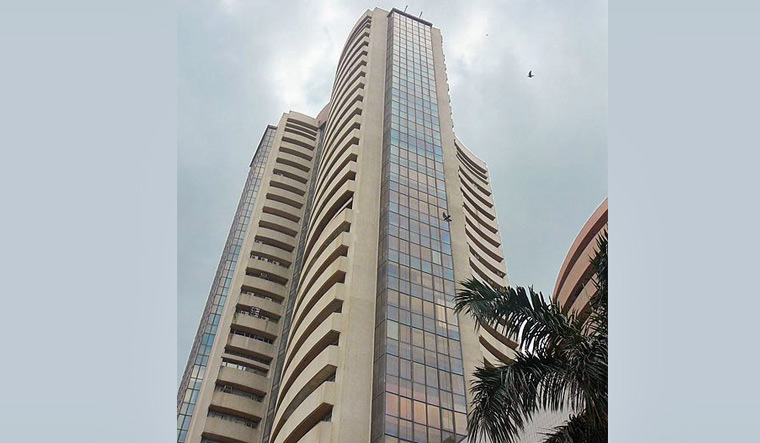All eyes of the market are on the budget announcement this week, the last one before the current term of the Narendra Modi government ends. Typically, interim budgets coming before elections are seen as policy announcements, which signal the intent of the government.
Lot of expectation this time around is that the Modi government will announce a slew of measures targeting the rural economy, including something around a universal basic income scheme for farmers.
“We expect this budget to set the path for FY20; especially if the present government were to return to power, this could be the basis of its policy decision even after the general elections,” said Ashutosh Gehlot, market strategist at Edelweiss Broking.
As far as the macro-economy goes, inflation has been benign in the last few months and has continued to undershoot Reserve Bank of India’s inflation targets. Retail inflation in December hit a 18-month low level of 2.19 per cent. However, the economy has slowed, although it still remains the fastest-growing economy in the world.
According to figures released by the Central Statistics Office (CSO), India’s economy is projected to grow 7.2 per cent in the year ending March 31, 2019. Considering that the GDP grew at 7.6 per cent in the first half (April-September), CSO’s full-year estimates suggest only 6.8 per cent growth in the second half of the year (October-March).
In this backdrop, the Modi government could increase spending across key sectors, in a bid to boost the economy.
“India’s macros have been weakening... Headline inflation has been low. At this juncture, the advantages of expansionary fiscal policy could be immense. However, it boils down to where the resources are channelled and their impact on industry productivity,” said Gehlot.
Recent assembly elections have shown that rural distress has emerged as a key issue. This year, apart from the Parliamentary elections, several other key states will also go to polls. Therefore, measures targeting this stress, as well as generating jobs, are likely to be major areas of focus, feel experts.
But a key thing to watch will be where the money will come from. Till November, India’s fiscal deficit had already touched 114.8 per cent of the budgeted estimates. There is an expectation of some fiscal slippage this year, but the room to manoeuvre remains limited.
“Shortfall in GST collections, telecom sector revenues and divestment revenues and some shortfall in direct tax receipts could upset the targeted budgeted revenues. This might happen at a time when the expenditure may overshoot budgeted numbers. While some shortfall may be recouped from higher RBI dividends, a minor overshooting of the fiscal deficit is likely, unless severe expenditure cuts are undertaken,” said Dhiraj Relli, MD and CEO of HDFC Securities.
However, given a election year, huge cuts in expenditure are unlikely. Many expect that the fiscal deficit this year will be close to 3.5 per cent of the GDP, compared with the initial target of 3.3 per cent.
Broking firm Religare says there is also a wish that the Modi government should tinker with direct tax and increase the personal income tax limit under Section 80C to Rs 2,50,000 and tax deduction limit for housing loans to be increased to Rs 4,00,000 from Rs 2,00,000 currently. There is also an expectation that the ambit of 25 per cent corporate tax rate could also be increased to companies with a turnover of up to Rs 500 crore.
“With the government priorities different at the current juncture, we expect focus on fiscal imbalances to be overshadowed by measures aimed at reinvigorating the economy. However, considering the limitations under which the government would be presenting this budget and significant pressure on
the exchequer in wake of lower-than-expected GST and divestment collection, it would be interesting to see how the government balances between the expected measures and the financial commitments that would arise out of it,” said Religare.
Any measures to boost rural incomes and increase income tax exemption limits are expected to leave more income in the hands of the population and that will in turn drive consumption in a big way.
In the last budget, the Modi government shocked investors by reintroducing the long-term capital gains tax of 10 per cent on equity investments. Many wish the government scraps it, but given that flows into equity funds and direct equity have comparatively remained strong, compared with the past trends, the government is unlikely to re-look at it.
Even as the government introduced LTCG on equity, there is no such tax on unit-linked insurance products or ULIPs, which also largely invest the premiums into equity and debt funds. Financial planners say there is a need for the finance minister to look at a level playing field for the ULIPs and equity funds.
Sonal Varma, chief India economist at Nomura Securities, expects the government to announce a cash transfer scheme for small and marginal farmers. Beyond the farm sector, Varma expects the government’s focus will be on measures for micro, small and medium enterprises and the middle class, although she doesn’t expect any big tax changes.
Looking ahead into FY2020, Varma expects the government to be “prudentially populist.”
“There is a temptation to be crowd-pleasing, treat the current farm distress as an ‘emergency’ and present a fiscally profligate budget. By contrast, the finance minister has also underlined the merits of fiscal consolidation. On balance, we believe there will be lots of populist rhetoric and action for farmers and the ‘common man’ in the FY20 budget, but the government will also attempt to burnish its reformist credentials by sticking to a conservative fiscal deficit target of 3.1 per cent of GDP,” added Varma.
Capital goods companies will also hope that the government increases its allocation to infrastructure spending next year, including its allocations for schemes like Pradhan Mantri Gram Sadak Yojana and Atal Mission for Rejuvenation and Urban Transformation, which could also boost cement and infrastructure companies.



